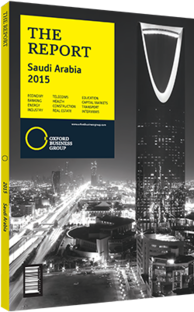Mohanud Helal, Secretary-General, Economic Cities Authority (ECA): Interview

Interview: Mohanud Helal
How do Saudi Arabia’s economic cities differ from other economic zones in the MENA region?
MOHANUD HELAL: The main difference lies in the operating model, which in Saudi Arabia truly activates public-private partnerships and seeks enhanced private sector participation. This is what makes these economic cities unique. Each of them is formed by a consortium led by a private player – called the master developer – which is primarily in charge of developing the entire city, operating it and attracting investors. Working closely with the private sector in this way helps the government to reduce its already hefty annual budget.
What factors have delayed their development?
HELAL: In early 2006 the Saudi Arabian General Investment Authority announced six economic cities, but only four were launched. Interestingly enough, by 2012 the cities had not fulfilled all the promises conveyed to the public. Paradoxically, one of the main reasons for delays was the precipitated launches of the cities themselves. For fear of competition from neighbouring and regional cities, feasibility studies were not duly completed and launches were rushed. The thinking was, “Let’s launch these economic cities and worry about the unanswered questions as time goes by”.
Another reason for delays was the late issue, in 2010, of the ECA Act, the law governing the economic cities. While no master developer can claim it would have completed its job had the act been passed earlier, it certainly would have helped fast-track the cities’ development. It is also worth mentioning that the cities have received heavy media coverage. This raised expectations and made the public think they could be completed in three to four years, like a school or stadium. The reality is that it will take decades before they materialise.
For the King Abdullah Economic City (KAEC), what is being done to jump-start industrial activities?
HELAL: As the flagship of the Kingdom’s economic cities, KAEC has many different areas including industrial, commercial, recreational, residential and port zones. Among the industries it is focusing on are the pharmaceutical, fast-moving consumer goods, logistics and light industries. Its master developer, Emaar, had so much experience in residential developments that it put great emphasis on the city’s residential area. In 2008, however, this led the city to be perceived as a weekend destination. Given the slow pace of KAEC’s industrial development, the ECA and Emaar then jointly commissioned a study called the Accelerated Development Plan, which turned into an agreement between the two parties. Emaar has since re-oriented its priorities and started to execute the basics of the agreement, including anchor investments such as the industrial zone and King Abdullah Port (KAP). As a result, Emaar has signed deals with more than 88 investors, eight of which have already started operations.
In what ways is KAP attracting private investments and increasing the Kingdom’s trade volumes?
HELAL: KAP began partial operations in September 2013, focusing only on trans-shipment, and started its import-export business in January 2014. It is the first port in the region to be developed by the private sector, both infrastructure and superstructure – proof of the future focus on privatising some projects that the state used to take care of from A to Z. Today KAP’s role as an anchor investment catches the attention of investors –ever since it became operational, they have wanted to reserve industrial plots near it. The port is set to recover huge volumes that are expected to come directly to the Kingdom instead of via neighbouring ports. However, we must factor in strong GCC competition. No one is going to want container volumes redirected to another country, so we expect to see many investment calls and strong incentives offered in the region. Still, KAP did not open to compete with local ports but regional and global ones. When finished, it will have a capacity of 20m twenty-foot equivalent units, plus a competitive edge in fast-track processes.
You have reached the limit of premium articles you can view for free.
Choose from the options below to purchase print or digital editions of our Reports. You can also purchase a website subscription giving you unlimited access to all of our Reports online for 12 months.
If you have already purchased this Report or have a website subscription, please login to continue.

